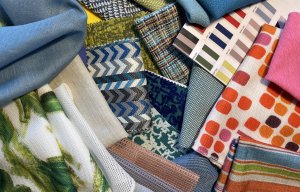
Trevira suppliers showcase at Heimtextil 2024
Suppliers entered almost 150 fabrics and a specialist panel selected 15 winners, which earned a place on the Trevira stand at Heimtextil.
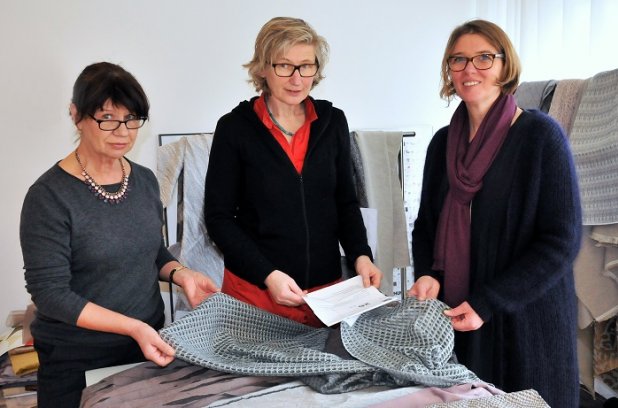
27th January 2016
Innovation in Textiles
|
Frankfurt
Last year Trevira, the leading fibre manufacturer, invited suppliers of Trevira CS fabrics to participate in a fourth edition of the creativity competition with their latest developments.
Participants were asked to submit their entries in one of five categories that reflect both current market trends and highlight the great degree of quality, innovation and functionality found in Trevira CS materials available on the market.
Suppliers entered almost 150 fabrics and a specialist panel selected 15 winners, which earned a place on the Trevira stand at Heimtextil 2016 that took place in Frankfurt this month.
At this year’s Heimtextil Trevira presented a new stand concept, which featured seven so-called Labs, which stand for product innovation and development. Five Labs were based on the entries for the 2016 Trevira CS fabric competition and further submissions of customer fabrics, reflecting current market trends.
Lab No. 6 was devoted to fabrics in Trevira hybrid yarns with low-melt components and in Lab No. 7 visitors could learn about the services on offer from Trevira laboratory.
The 3D Lab displayed fabrics with 3D looks deriving from 3D construction or appearance. The dense curtain material from Creation Baumann has a relief-like pattern that is especially visible in the interplay of light and shade. The pattern of the Jacquard has an evenness that gives an embossed effect. The satin weave and the smooth surface produce a very subtle 3D effect.
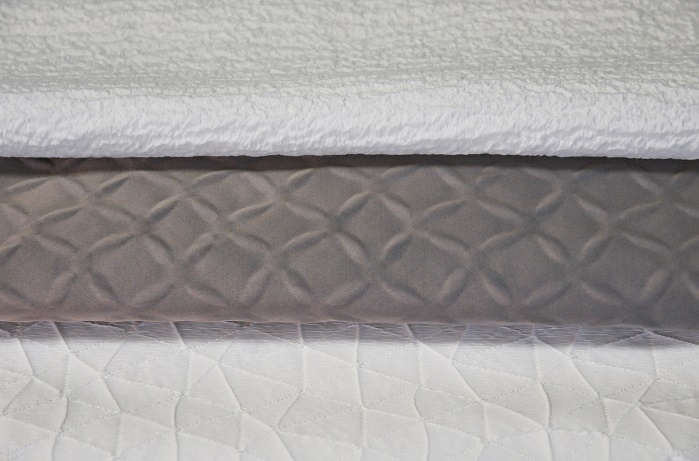
The technical structure of the Ishi article by Saum & Viebahn has produced a quilted effect, giving the fabric a crystalline, facet-like structure that results in the three-dimensional look. In particular, the interplay of light and shade lends much greater emphasis to the 3D experience.
Trevira CS quality by Wintex derives its 3D effect from the use of shrink yarns in a Jacquard weave, employing a special technique in the construction. The result is a very irregular surface that calls to mind associations with the world of nature.
The Artisan Lab showed opulent fabrics with decorative features that blend elements of tradition/the past and the present/future or show characteristics of traditional manufacture. The Kaleido article by Nya Nordiska Textiles displays close associations with the elevated weaving art of the Bauhaus era, with specific reference to the fabrics of textile artist Anni Albers.
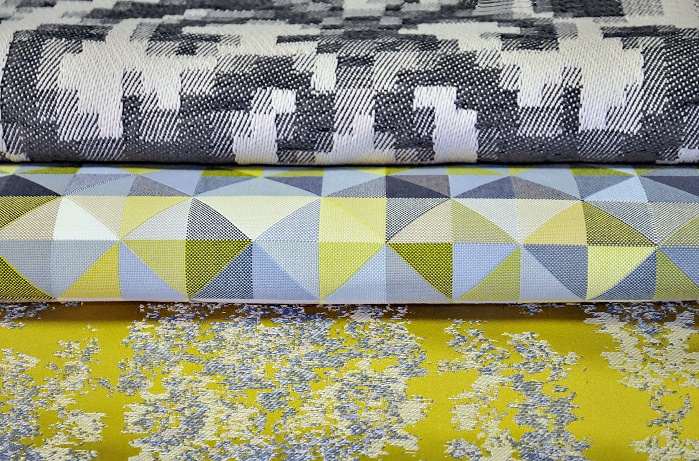
The Pixelé article by Rubelli is another example of blending the traditional with the modern. The pattern was inspired by a design sample from the Rubelli archive of the 18th century. Using pixel art, this was enlarged many times and rastered. The material looks like it is handwoven, yet the pattern has been alienated by modern computer techniques, producing a totally new and modern design.
In the Rinascimento article by SoFarSoNear the panel saw a successful merging of classic elements with the used look. The shiny, silky surface contrasts with the ornamental motifs that due to the weave structure seem worn. Here too a traditional pattern has been alienated to achieve a new and modern look.
The Digital Lab presented new digitally printed materials that stand out with their design, print quality or interplay of print base and design. Dina/Vanelli Tekstil presented a digitally printed curtain fabric with a high-end appearance and exuding classic understatement. Made up of tiny spots, the pattern seems from a distance to be a woven material and has a false-plain effect.
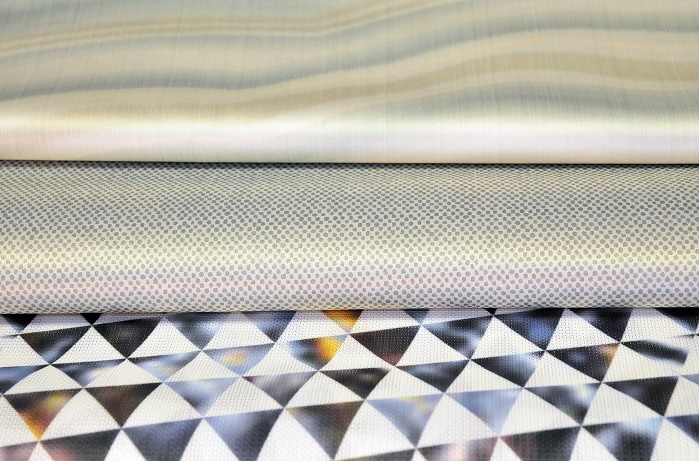
The Carrière article by Lelièvre is a digitally printed satin material that simulates the use of warp print. The impression of a marble surface is achieved by the selection of colours and their special gradation.
Finally, the Mineral by AB Ludvig Svensson is a digitally printed, stiffened textile article. The designing exploits to the full the opportunities offered with digital printing: a blurred photo is rastered in triangles, which change uniformly from white to coloured.
The Sensuous Lab deals with fabrics that possess special haptic qualities and stand out by virtue of their special handle and successful combination of handle and looks. Solea, the semi-transparent curtain fabric by Création Baumann features the non-slip, latticed structure. The subtle colour shading in warp and weft enhances the natural look.
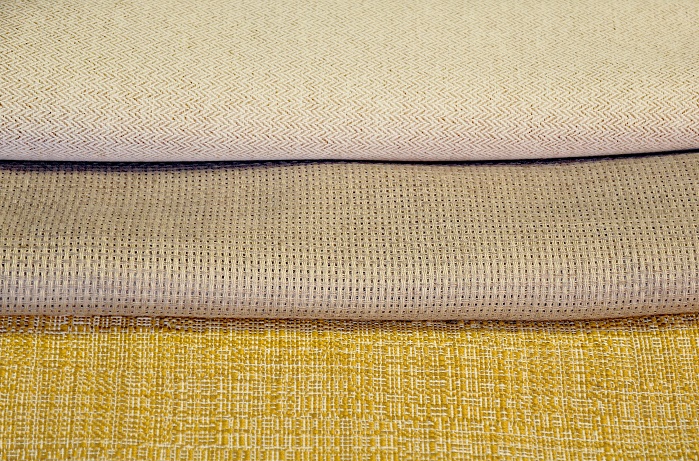
Fidivi Tessitura Vergnano presents a Fox article that has a wool-like handle. This is a lightly brushed material with a fine fishbone pattern that produces a clean woven structure.
With its retro design, the Plutone article by Rubelli recalls fabrics from the fifties and impresses as robust, hardwearing and hand-crafted. The use of mixed yarns of varying strength produces a grainy, dynamic material that makes a lively impact.
The Techno Lab focused on fabrics with distinctive technical attributes. With its Vetara article Piovano has created a totally new type of drape: an innovative knitted fabric credited by the panel to be a possible market breakthrough, since its mono-elasticity is accompanied by the necessary shape retention.
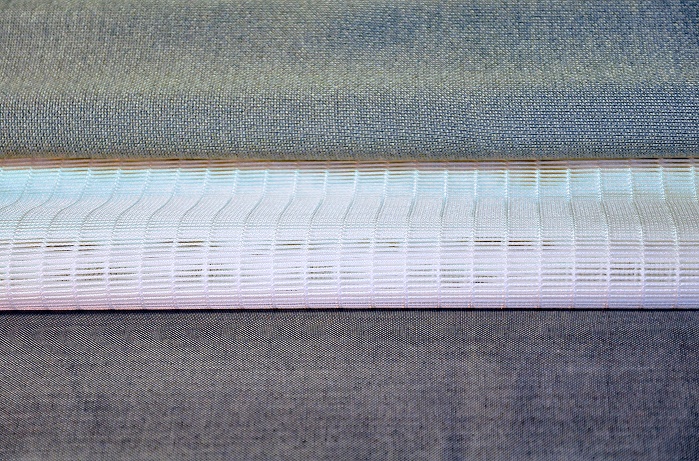
Gaetano Rossini presented a knitted alternative to organza fabrics. The spacer fabric is transparent and filters the light very finely. The double layering supplies volume, resulting in exciting light effects, while at the same time retaining transparency.
The Panama article by Stotz & Co. captivates with its elegant gloss, which is achieved by an accomplished chintz finish. Using a light yarn in the warp and darker yarns in the weft achieves a melange effect, which looks particularly interesting due to the extreme chintz treatment.

Business intelligence for the fibre, textiles and apparel industries: technologies, innovations, markets, investments, trade policy, sourcing, strategy...
Find out more